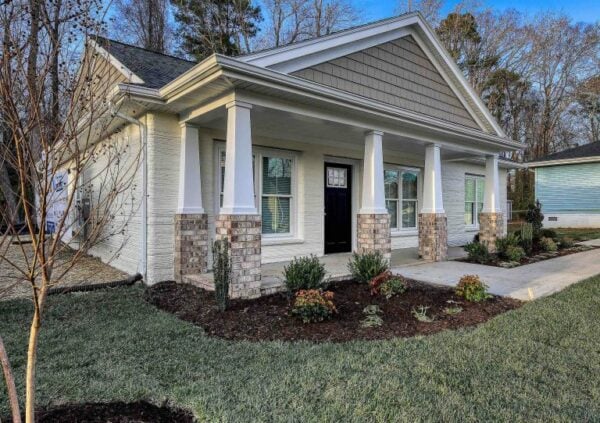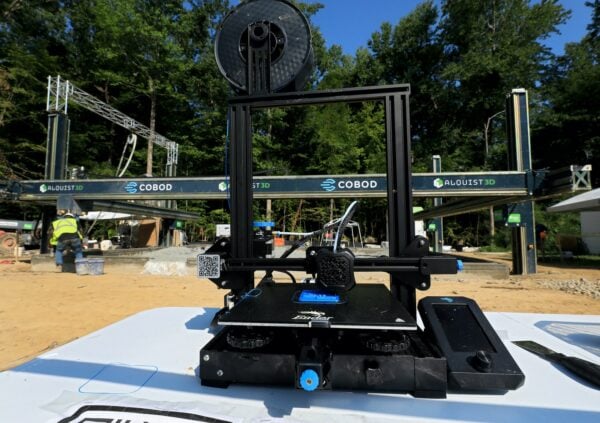NEWS: Habitat for Humanity 3D prints first home in USA
As a part of the ‘Habitat Homebuyer Program’, which develops and sells home to families with low to moderate incomes, they are trialling new and innovative ways to provide affordable housing.
The construction crew, Alquist, 3D printed the concrete exterior walls to the 1,200 square foot (111sqm) home in 28 hours, saving an estimated 15% per square foot in building costs, and at least four weeks in the construction schedule.
Read more on; Habit for Humanity’s first 3D printed home in Williamsburg, Virginia
Being the first project, only exterior walls with window and door openings with an insulation cavity were printed onto a slab on ground. Timber framed walls will create the interior walls and a timber framed truss roof will sit on top of the structural 3D printed walls.
Habitat homebuyers must have an income between 45-80% of the area median income, excellent credit rating and the ability to make repayments. Habitat homes are sold at no profit with a zero-interest equivalent, 20- to 30-year mortgage. The repayments by the home owners are then earmarked to go toward building future homes for qualified families, where families must then contribute physical work or volunteer 300 hours as a requirement of the program.
Alquist, the 3D printing construction company installs a 3D printer in the kitchen of every home it builds, where home owners receive downloadable computer files that allows them to print knobs, light switch covers and other replaceable parts for the house interior.
Housing Shortages in Australia
Considering the Social Housing shortages in Australia, there is also a dire need for innovative, affordable and accessible solutions here;
“New South Wales is experiencing an under-supply of social housing. Using forecast estimates derived from 2016 ABS Census data, the AHO indicates that in 2017, 39,494 houses were required to fulfill Aboriginal housing demand, while 28,638 properties were available (AHO 2018a). The supply gap of 10,855 properties is equivalent to 27.5 per cent of total demand. At current rates of acquisition and construction…the proportion of unmet demand is expected to increase to 47.1 per cent by 2031, a shortfall of 30,124 properties”. AHURI Report, ‘Sustainable Indigenous housing in regional and remote Australia‘
Healthabitat is interested to see the development and role such innovative technologies can have in providing affordable housing to our communities, and hopes, such technology never compromises the importance of functioning health hardware in a house to improve health.











